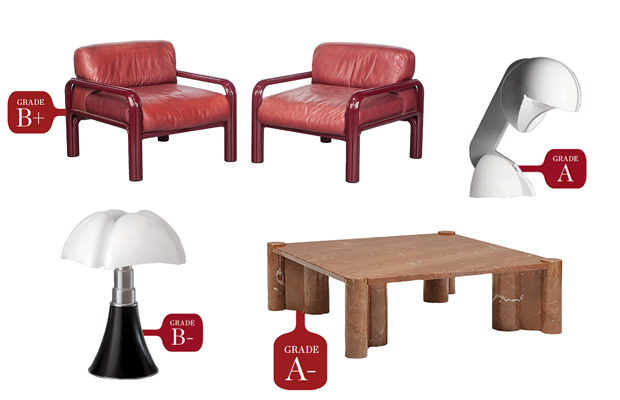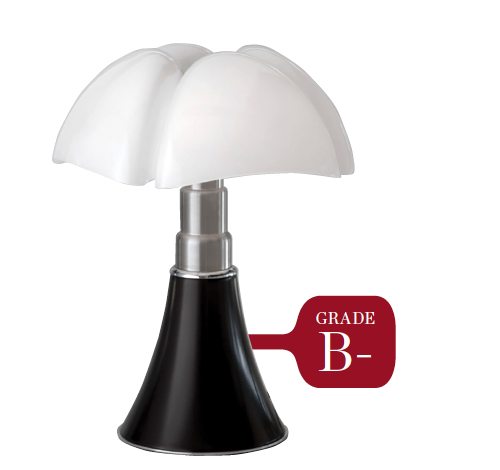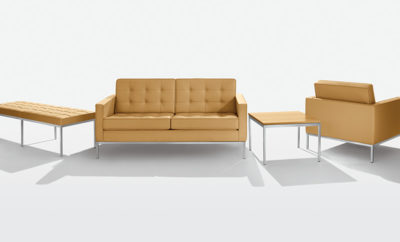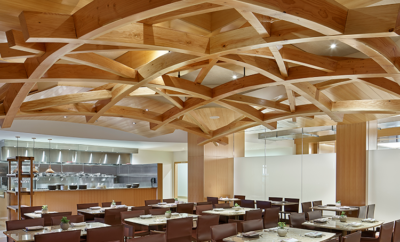 HERITAGE AUCTIONS | COURTESY WRIGHT (2) | ULTRA MODERNE, PARIS
HERITAGE AUCTIONS | COURTESY WRIGHT (2) | ULTRA MODERNE, PARIS
Design
Grading System: Gae Aulenti
TROY SEIDMAN LOOKS AT THE WORK OF THE ITALIAN ARCHITECT AND DESIGNER, WHO, LIKE MANY OF HER FEMALE CONTEMPORARIES IN THE ART AND DESIGN REALM, HAS BEEN DRAMATICALLY UNDERVALUED IN COMPARISON WITH HER MALE COUNTERPARTS
WHILE IT’S NOT A FORMAL MOVEMENT, it has more gravitas than a trend: dealers, curators, scholars, and writers are increasingly dismantling the design canon in order to include or consider more female creators. As I write this, I am in the midst of reading Gail Levin’s impressive biography of Lee Krasner. Just last week, I was blown away by the debut exhibition at Hauser Wirth and Schimmel in Los Angeles, Revolution in the Making: Abstract Sculpture by Women 1947–2016. So a combination of zeitgeist and personal curiosity brings us to the latest subject for Grading System: Gae Aulenti, the accomplished Milanese architect and designer. Both celebrated and debated during her lifetime, in recent years she has fallen from discussions despite a versatile and illustrious career.
After graduating from the Milan Polytechnic School of Architecture, she worked as an art director for a decade at the legendary Italian architecture magazine Casabella. In the 1960s, thanks to the connections she made at the magazine, her career flourished. By the end of the decade she had designed numerous showrooms and retail spaces (including Max Mara in Milan, Dior in Paris, and Fiat in Zurich).
In addition to these interior architecture projects, she also designed lighting and furniture for the best Italian manufacturers, including Kartell, Artemide, Venini, and Zanotta (with several pieces having been conceived for her interiors). In 1969 Aulenti finished the “Home of a Collector” in Milan—one of the first examples of open-concept living. It would lead to many other art-related projects throughout her career, from a large gallery at the Centre Pompidou in Paris to the Asian Art Museum in San Francisco.
Aulenti also had a fruitful relationship with Knoll for more than a decade. She first designed its Boston showroom in 1968, followed by its New York City space the following year. In 1971 Knoll briefly distributed pieces from her (shortlived) Tennis collection of seating and bed frames and subsequently developed the Aulenti Collection, which debuted in 1976, their most successful collaboration.

ULTRA MODERNE, PARIS
Pipistrello light • 1965
PIPISTRELLO IS AULENTI’S signature design, and one of her only creations still in production (vintage examples are in the Centre Pompidou, the Museum of Modern Art, the Metropolitan Museum of Art, and the Museum of Fine Arts in Montreal). MoMA translates the name as “sleeping bat,” although personally I have to really squint to conjure up that image. With its telescopic shaft (made of stainless steel) and acrylic shade, to me the lamp more resembles a stylized African tree. Pipistrello appears in several of Aulenti’s published projects from the late 1960s, including the Paris Olivetti showroom and the “Home of a Collector” in Milan. Aesthetically, it fits comfortably with other Italian and French “Space Age” designs of the period. However Pipistrello has a complexity of form and elements suggesting that it was “engineered” rather than simply designed. While it looks fantastic on a museum plinth (and in Aulenti’s period interiors), today it is too big to be a bedside lamp and too short—while simultaneously requiring a large footprint— to be a floor lamp. In celebration of the lamp’s fiftieth anniversary, Martinelli Luce released it with a sexy gold base—though one questions whether this would ever have been Aulenti’s design choice. Regardless, the option is appealing, especially considering how vulnerable vintage examples are: the white enameled base is easily scratched and the acrylic shade, if cracked, is virtually impossible to replace. Is it unfair to be assessing this design on durability? One of her colleagues wrote in Artforum that Aulenti designs were “solutions for specific spaces,” rather than for the mass market. Intentions aside, the merits of Pipistrello are derived from its aesthetic personality, not its functionality.












